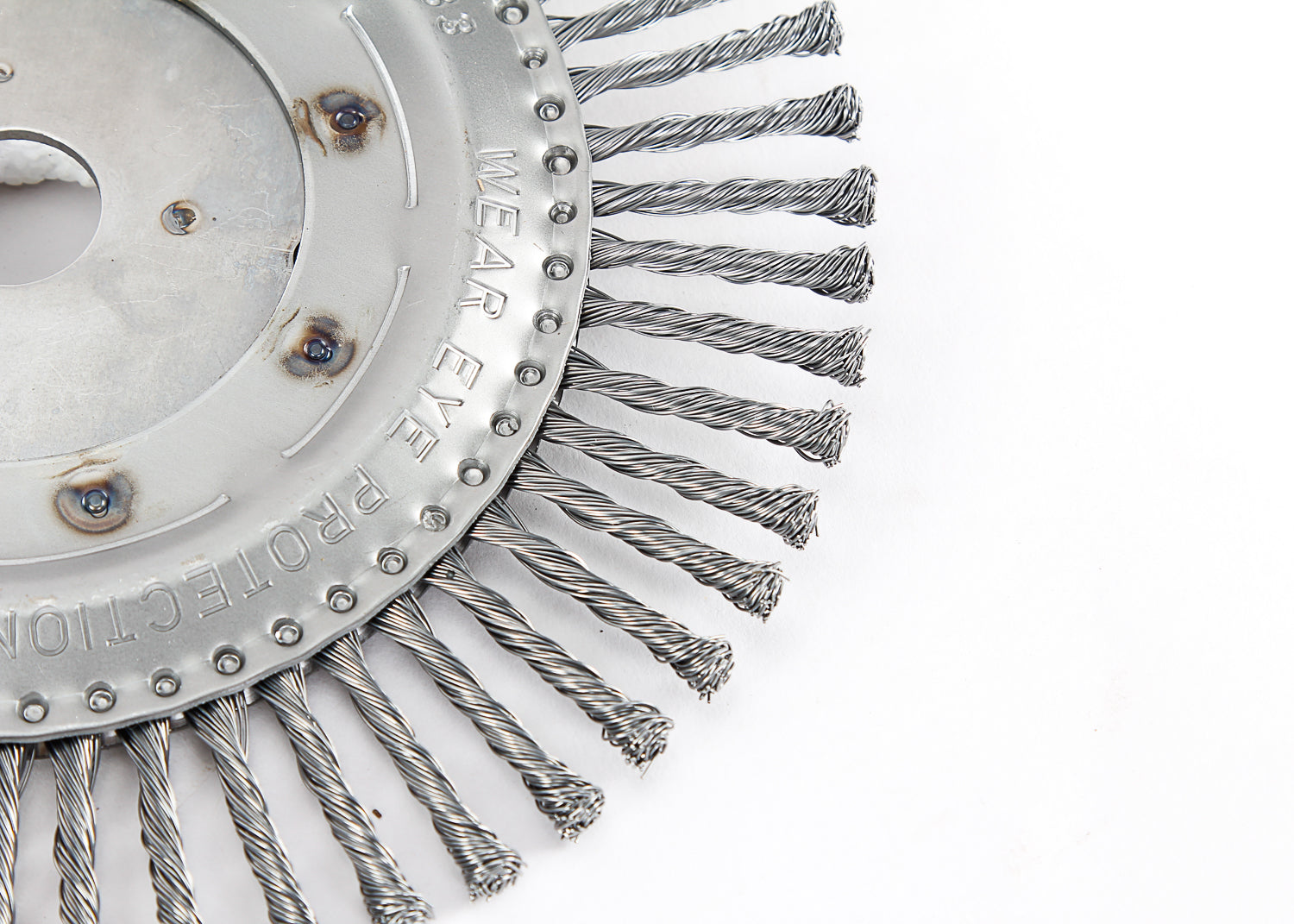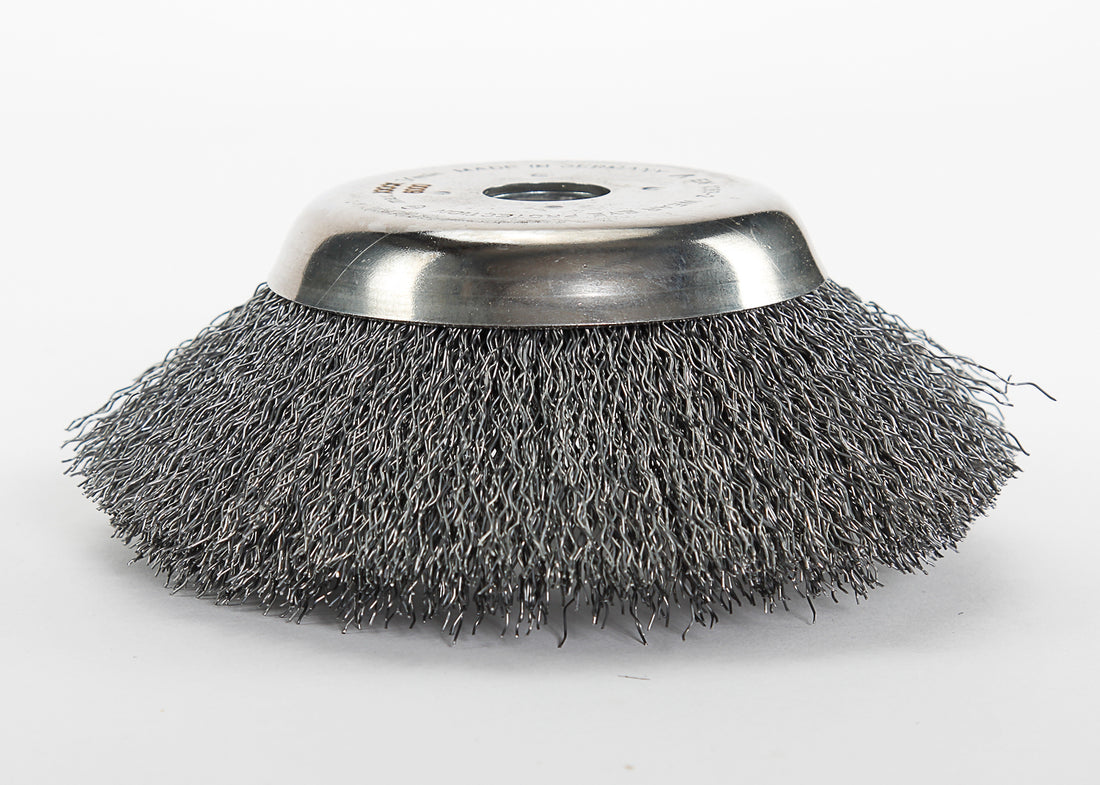We are all used to seeing grass trimmers (or grass strimmers) being used to cut back large areas of overgrown grass or edging lawn areas to make them look neat and tidy. Not everyone will have used one but those of us who have will be used to the spool of cutting line that always seems to break. However not all trimmers are alike, some can accept different types of head so aren't restricted to the spool & line for its cutting and why restrict the trimmer to just cutting?
Many people only think of grass trimmers that are used for cutting long grass in areas where lawn mowers can't reach or of brush cutters that have a different type of head, normally a blade, and are used for cutting back very heavy growth such as brambles and even small saplings, but there are many alternatives to the spool or blade and that is what we offer in our range of bevel brushes and wheels.
Not all machines can accept a different type of head so this is the first thing that you will need to check on your strimmer or, if looking to purchase a new one, check if you can change the head or if you are restricted to the head that it is supplied with. Generally, the smaller and lower cost machines will not accept a change of head so you will be restricted to the spool & line which is the most common attachment. Normally a machine that can receive different heads will have a threaded rod over which the head will fit then a locking nut which threads onto the rod and holds the head in place. Otherwise the machine will probably just allow you to push & click the spool or blade into place so you aren't able to use different types of head such as our bevel brushes or wheels. If you do have a threaded rod then check the diameter to ensure that our heads will fit. 25.4mm is the diameter required for our heads and you should find that this is fairly standard so shouldn't be a particular issue.
Our range of heads include brushes and wheels with the brush bristles made from either plastic or metal. The brushes have two types of bristles, in addition to the plastic or metal, and they are straight or crimped with the straight (or knotted with the metal brushes) offering greater resistance so are stiffer than the crimped so are more suited to heavier work than the crimped which are more suited to working on delicate or softer surfaces. The metal wheels are only available with knotted bristles although, as with the brushes, they are available in a range of sizes.
We have a range of designs but what to use where? It is probably easier to list the options by their hardness so the hardest head is the metal with knotted bristles then the metal with crimped bristles followed by the plastic head with straight bristles and finally the plastic crimped bristles. So the first thing is to decide which head is most suited to the surface or surfaces you want to clear. With the brushes you are normally looking at clearing dirt, weeds or other growth from flat surfaces such as car-parks, patios or roadways. Stone surfaces can normally take some heavy brushing so the knotted brushes or wheels may be more suited, a patio or tarmac surface may need something a little more gentle so either the crimped metal or straight plastic would be more suited. If you are clearing delicate surfaces such as sandstone or some marble areas then you may want to consider the softest option which is the crimped plastic brush. If clearing flat areas then the brushes are the best option but if you are looking to clear between slabs or trying to reach into a corner or where a horizontal and vertical surface meet then the wheel is an ideal option as you can reach right into areas where the brush would be just too stiff or too awkward. Metal wheels can also be used for edging so tidying grassed edges along garden paths or pavements.
Hopefully this has given a little more information on our strimmer brushes and wheels and where you can use them and which ones to use. You can always contact us if you have any more questions or need some help in deciding which attachment to use.

